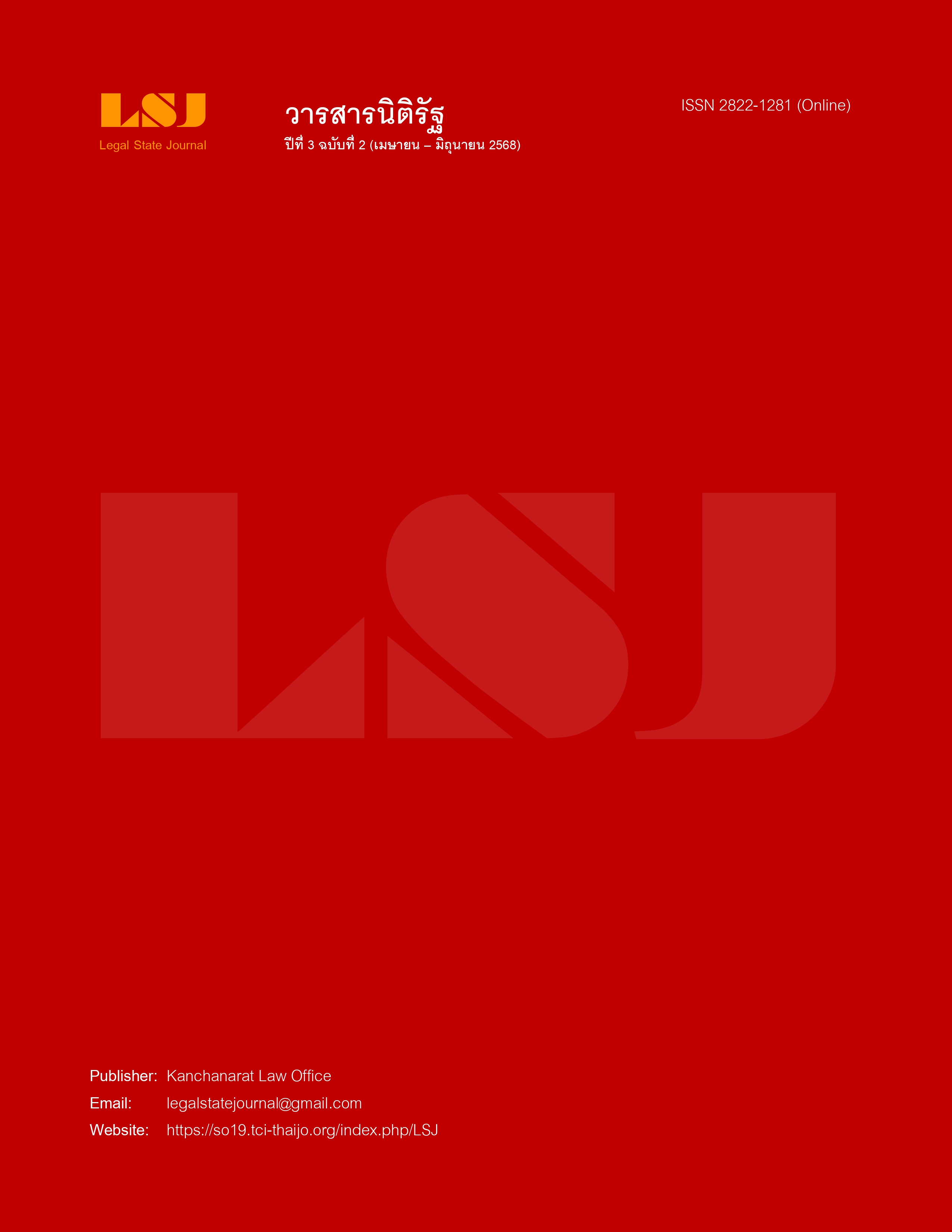Political Concepts and Provincial City Pillar Shrines from 1782 to 2023
Main Article Content
Abstract
This research article examines (1) the political concepts as evidenced in the provincial city pillar shrines from 1782 to 2023; investigates (2) the political, social, and cultural contexts influencing political concepts, the central power through the construction of provincial city pillar shrines from 1782 to 2023; and analyzes (3) the relationship of the city pillar shrines as a symbol of power and stability in modern Thai political concepts. The technique of qualitative research was employed. Data were collected using the methods of survey and documentary research. Use descriptive and interpretive analysis. Findings are as follows: (1) The city pillar shrines are a symbol of the state power that changes in accordance with the government system from the power center of the kings in the period of the absolute monarchy to being an instrument to build the national solidarity in the democracy system. The city pillar shrines reflect the root of the political concepts connecting the state power and religion through the Cosmology of Hindu and Buddhism to foster legitimacy in the government. It is a symbol of stability and the relationship between the state and the people. The city pillar shrines remain the symbol of stability and the relationship between the state and the members of the general public. (2) The Rattanakosin period use of the city pillar shrines to enhance the legitimacy of the kings; the period of country reform (1868-1982) with the expansion of the role of the city pillar shrines to control the local power to the present period (1982-2023). The city pillar shrines connect religion, culture, and politics by reflecting the cosmology of Hindu and Buddhism and being the symbol of state power to enhance the legitimacy and the security of the Thai through religious rites and politics. The elites and members of the general public collaborated in the construction and restoration of the city pillar shrines in every era. (3) The city pillar shrines are the important instrument in building governing legitimacy through religious rites and state ceremonies. The city pillar shrines play a role as a symbol of state security through religious rites and restoration to create political stability. The city pillar shrines were the center of faith of the members of the general public and used to foster confidence in the state till the present day.
Article Details

This work is licensed under a Creative Commons Attribution-NonCommercial-NoDerivatives 4.0 International License.
The article published in the journal is the opinion and responsibility of the authors. Not related to Kanchanarat Law Office.
References
กาญจนา แก้วเทพ. (2566). อุดมการณ์และกลไกทางอุดมการณ์ของรัฐ. text.
เจนจบ ยิ่งสุมล. (2566). ศาลหลักเมือง กรุงเทพ มหาศรัทธา แห่งความนับถือในแผ่นดิน. ค้นจาก https://ngthai.com/history/47411/bangkok-city-pillar-history
ชาญวิทย์ เกษตรศิริ. (2560). ประวัติการเมืองไทยสยาม พ.ศ. 2475-2500 (พิมพ์ครั้งที่ 7). มูลนิธิโครงการตำราสังคมศาสตร์และมนุษยศาสตร์.
ไชยรัตน์ เจริญสินโอฬาร. (2555). สัญวิทยา โครงสร้างนิยม หลังโครงสร้างนิยม กับการศึกษารัฐศาสตร์ (พิมพ์ครั้งที่ 2). วิภาษา.
ทักษ์ เฉลิมเตียรณ. (2561). การเมืองระบบพ่อขุนอุปถัมภ์แบบเผด็จการ (พิมพ์ครั้งที่ 5). มูลนิธิโครงการตำราสังคมศาสตร์และมนุษยศาสตร์.
นิธิ เอียวศรีวงศ์. (2565). ชาติไทย เมืองไทย แบบเรียน และอนุสาวรีย์ ว่าด้วยวัฒนธรรม, รัฐ และรูปการจิตสำนึก (พิมพ์ครั้งที่ 5). มติชน.
พชรวัฒน์ เส้นทอง. (2562). อุดมการณ์ทางการเมือง: อุดมการณ์ทางการเมืองไทย. วารสารบัณฑิตศึกษา มหาวิทยาลัยราชภัฏวไลยอลงกรณ์ ในพระบรมราชูปถัมภ์, 13(3), 230-248.
วัชรพล พุทธรักษา. (2561). อันโตนิโอ กรัมชี่ กับการจัดวางความคิดทางการเมือง: ปรัชญาปฏิบัติ การเปลี่ยนแปลงทางสังคม และการปลดปล่อยมนุษย์. สมมติ.
วิศรุต บวงสรวง. (2562). ศาสนวัตถุกับอุดมการณ์กษัตริย์นิยมไทย พุทธทศวรรษ 2410-2540. ดุษฎีนิพนธ์ปรัชญาดุษฎีบัณฑิต (ประวัติศาสตร์), มหาวิทยาลัยธรรมศาสตร์.
สรชัย ศรีนิศานต์สกุล. (2563). อิทธิพลของโหราศาสตร์ในสังคมและการเมืองไทย. มหาวิทยาลัยบูรพา, คณะรัฐศาสตร์และนิติศาสตร์.
สวรรค์ ตั้งตรงสิทธิกุล. (2561). หลักเมือง:พัฒนาการคติ แนวคิดสู่งานศิลปะและสถาปัตยกรรม. วิทยานิพนธ์ปรัชญาดุษฎีบัณฑิต (ประวัติศาสตร์), มหาวิทยาลัยศิลปากร.
สิงห์โต สุริยาอารักษ์. (2511). แนะนำการศึกษาวิชาโหราศาสตร์ไทยเบื้องต้น ผูกดวงชาตาพยากรณ์. ชุมนุมช่าง.
Anderson, B. (1983). Imagined communities: Reflections on the origin and spread of nationalism. Verso.
Bates, T. R. (1975). Gramsci and the theory of hegemony. Journal of the History of Ideas, 36(2), 351-366.
Bourdieu, P. (1989). Social space and symbolic power. Sociological Theory, 7(1),14-25.
Margulies, J. D. (2018). The conservation ideological state apparatus. Conservation & Society, 16(2), 181-192.
Mianlamai, S. (2023). Astrology in Thailand: Life guidance from the stars. Retrieved from https://www.thailandfoundation.or.th/culture_heritage/astrology-in-thailand-life-guidance-from-the-stars

